Baguio in the eyes of Ibaloys
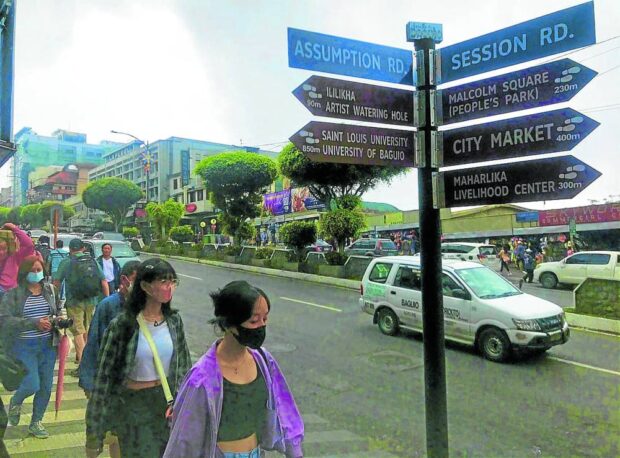
TRANSFORMATION | From a grazing plateau that is sparsely populated in the early 1900s, Baguio City has evolved into a multicultural economic powerhouse of the Cordillera. (Photo by NEIL CLARK ONGCHANGCO / Inquirer Northern Luzon)
BAGUIO CITY, Benguet, Philippines — Before Baguio officially opened as a chartered city on Sept. 1, 1909, its American “founding fathers” invited the country’s affluent society to purchase townsite lands and make their homes in the developing summer capital.
Dean Conant Worcester, who served as secretary of the Interior in the American-controlled insular government, bought about 40,000 square meters (4 hectares) of Baguio land in 1906, according to entries in an old logbook. The archbishop of Manila acquired two sets of real estate in the same year, while a firm called the Philippines Sugar Estates Dev. Co. got 34,181.65 sq m.
Filipinos also obtained their own pieces of Baguio, so the entries included the names of Manuel Gonzales, Francisco Gonzales, Roman Martinez, Benito Legarda, Agusto Tuason, Isidro Ibolson, and Antonio Prieto. Entry No. 79 has caught the interest of many researchers because it lists a 1-ha property obtained in 1908 by the only Igorot on the list: Mateo Cariño.
Some of Mateo’s great-grandchildren, most of them scholars and researchers, were initially baffled by Mateo’s entry in the 1910 townsite reservation index of lots and other colonial documents when they gathered to review their family history on Aug. 30, two days before the city celebrated its 114th foundation day.
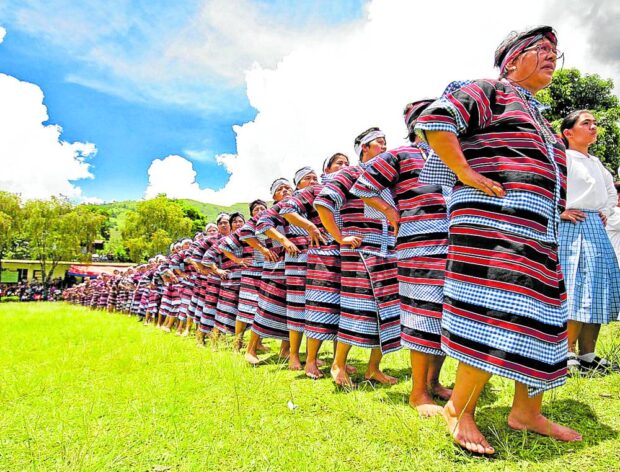
OLD MODERN | Baguio’s original settlers come from big clans of Ibaloys in Benguet province. This 2008 photo shows Ibaloy elders during a festival in Kabayan, Benguet. (File photo by EV ESPIRITU / Inquirer Northern Luzon)
Activist and researcher Joanna Cariño, who has produced case studies about her clan, said they could only draw one conclusion: “He had to buy back his own lands.”
Mateo Cariño was an Ibaloy cattle raiser and gold trader who was renowned in the global indigenous peoples community for winning a landmark 1909 American Supreme Court decision that recognized the “Native Title.”
Combined with the properties of his wife Bayosa Ortega, Mateo had possessory rights over pasture lands, gardens, and settlements in Kafagway, Ypit, Lubas, Chuyo, and Apdi in the last decades of the 19th century and the early years of the 20th century.
Private rights
Mateo fought to retain his rights over Ypit and Lubas which the American military had sequestered in order to construct a military garrison. These lands are now Camp John Hay.
“He (Mateo) applied for land registration on June 22, 1903, and started the long-running litigation, Cariño vs Insular Government,” Joanna said, and the American high court ultimately acknowledged Mateo’s land rights in the same year Baguio was born.
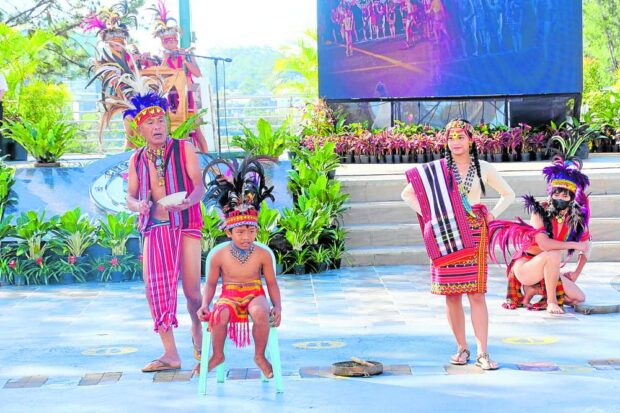
Its indigenous heritage and cultural traditions, which Ibaloy families continue to practice, have been embraced by migrants and new generations of residents. (Photo by VINCENT CABREZA / Inquirer Northern Luzon)
“When, as far back as testimony or memory goes, the land has been held by individuals under a claim of private ownership, it will be presumed to have been held in the same way from before the Spanish conquest. And never to have been public land,” wrote Associate Justice Oliver Wendel Holmes in the Feb. 23, 1909 ruling to describe the Native Title Doctrine (which is sometimes referred to as the Cariño Doctrine).
But while the Native Title principle serves as the backbone for the 1987 constitutional protection of indigenous Filipino rights, as well as the Indigenous Peoples Rights Act (Ipra) of 1997 (Republic Act No. 8371), it did not prevent Mateo and many more Ibaloy families from being displaced and pushed to the edges of the mountain city, Joanna said.
“The history of the chartered city of Baguio is a history of institutionalized land grabbing and the systematic dispossession of the original Ibaloy families’ ancestral lands,” she told her cousins and older relatives when they huddled at Burnham Park’s Ibaloy Garden.
“While Mateo Cariño won the case for native title, his victory was only a paper victory. [The American Supreme Court ruling] did not stem the continuing confiscation and expropriation of Ibaloy lands throughout history,” she said, noting new land laws enforced by the Americans after they replaced centuries of Spanish rule.
Joanna cited the 1902 Land Registration Act which requires landowners to secure titles as proof of ownership, and the 1905 Public Land Act which declared all lands not registered earlier by the Spanish government as public lands. Mateo secured a Spanish possessory title from La Union province, which was written in Castilian Spanish so the heirs had to seek out a language expert, Giron said.
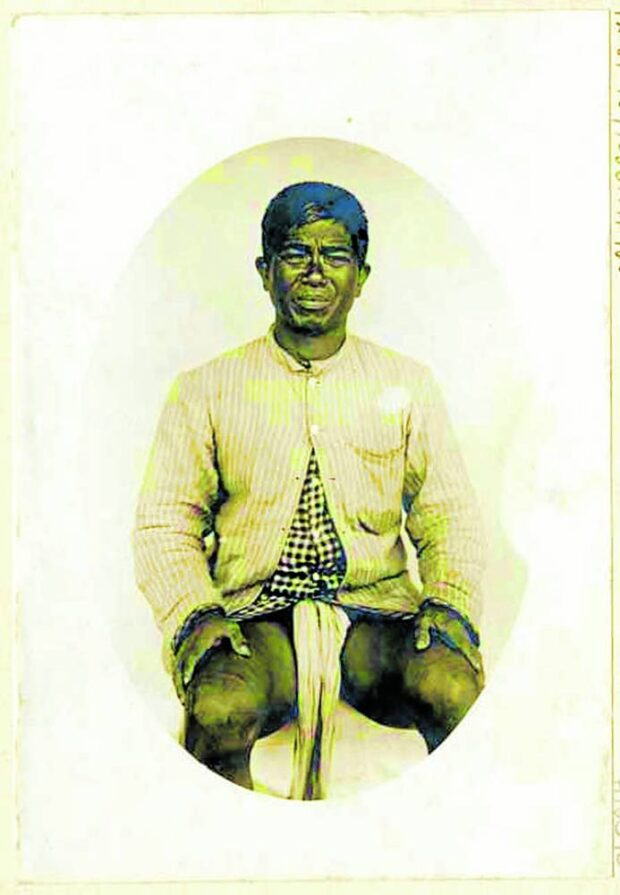
Mateo Cariño (Photo from LINDA GRACE CARIÑO)
The microfilm copy of Mateo’s document was accessed by former Environment Secretary Horacio Ramos, himself an Ibaloy, when the Department of Environment and Natural Resources first validated ancestral land claims in 1990, seven years before Ipra became law.
However, the original microfilm had allegedly been vandalized and a new name had been inserted in a recent check made by Mateo descendant, Rony Perez.
Forefathers
The descendants believed Mateo had been targeted by the Americans. The Philippine Commission enacted Act No. 636 on Feb. 11, 1903, to secure Ypit and Lubas, which were described as “the tract of land in the form of a circle with its center in the house occupied by Mateo Cariño at Baguio.”
Joanna denounced the cruelty of being “legislated out of your own home because it was standing on what had unilaterally been decided to be the center of the proposed townsite and to be driven out of your land to make way for a military reservation.”
Before the Americans built Baguio, it was home to the Ibaloy families of Tagle, Pucay, Piras, Suello, Carantes, Molintas and Cariño, Joanna said. They owned vast tracts of land in the area under a customary usufruct arrangement.
This meant that families who used these areas as either grazing land or for farming became owners of these properties in the eyes of the Ibaloy community. “Kung ikaw ang gumamit ng lupa, ikaw na ang owner (You become owners of the land you use),” Joanna said.
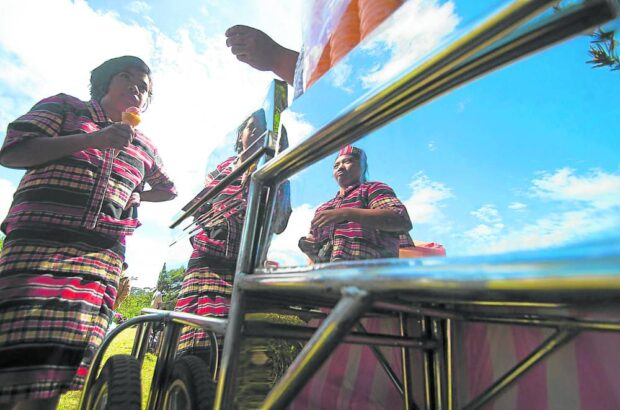
COOLING OFF | An Ibaloy girl takes an ice cream break during a festival in this 2014 photo. (File photo by RICHARD BALONGLONG)
“There were more cattle than people at the time,” said Mateo’s great-grandchild, Ruby Giron, an official of the Mateo and Bayosa Cariño Foundation.
The plateau that became Baguio was not a rice-producing environment at the time.
“Meat was abundant, but there was neither rice nor vegetables except for gabi (taro) stalks and leaves,” Joanna said.
Mateo, who grew up consuming rice in the Benguet town of Tuba, encouraged rice farming in what is now the Camp 7 community along Kennon Road.Modern archivists tend to call precolonial Baguio “Kafagway,” but this actually refers to land owned by Bayosa and Mateo encompassing the hill where the City Hall was built and the surrounding area, including the Ibaloy Garden.
“Apdi,” the Cariño descendants joked, meant “up there,” because it refers to Ibaloy houses where rows of hotels now stand along Kisad Road.
Mateo and Bayosa raised nine children in Baguio, each of whom has their own rich stories and legacies.
“Jose, my grandfather, studied in the States and returned in 1919 as the first Ibaloy doctor,” Joanna said, adding that “after World War II, he served as the first Ibaloy mayor of Baguio from 1946-1950.” Sioco, the eldest, had helped grow the family fortune.
Helen defied her father who did not want her to attend school. Josefa was ostracized for marrying a Japanese, which produced the line of acclaimed writer Sinai Hamada and brother Oseo.
“The 21st century continues to be one that is seeing historical injustice righted. We should be part of that righting and writing,” said Mateo’s granddaughter, Linda Grace Cariño, a retired communications professor at the University of the Philippines Baguio.